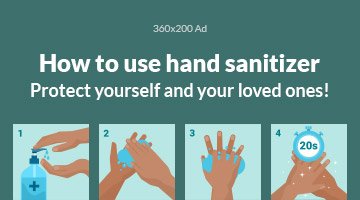Want to turn your love for nails into a job? This guide will help you become a nail tech.
This guide will teach you how to do manicures and create cool nail designs, and it will also show you how to start your beauty career.
A bright, modern nail salon featuring a skilled nail technician, surrounded by colorful nail polish bottles and tools, showcasing intricate nail art designs on a client’s hands, with soft lighting and a clean, inviting atmosphere.
Nail techs mix creativity with customer service. They do everything from simple manicures to fancy nail art.
We’ll discuss what nail techs do and how to learn the job. You’ll also find out what skills you need to succeed.
What Does a Nail Tech Do?
Nail technicians offer many nail care services to their clients. They do manicures and pedicures and create cool nail art designs.
A nail tech sets up their work area first. They make sure all tools and products are ready.
They greet clients and check their nails. Then, they talk about what services the client wants.
Nail techs carefully shape, file, and buff nails, preparing hands and feet for the next step.
They apply nail polish, gel, or acrylic. This creates pretty, long-lasting looks for each client.
Nail techs also do unique treatments. These include cuticle care and foot massages.
They keep everything clean and safe. This makes clients feel comfortable.
Nail techs teach clients how to care for nails at home. They suggest good products to use.
They stay up-to-date with new trends and methods. This helps them give the best service to clients.
Education and Training Requirements
Aspiring nail technicians must complete a state-approved cosmetology or nail tech program. These programs last 300-600 hours, depending on state licensing rules.
Students learn essential skills for manicures, pedicures, and various nail services. They study nail structure, diseases, sanitization, and polish application techniques.
Hands-on training in salons or clinics gives students practical experience. This prepares them for the real-world workforce.
A stylish and modern nail tech program classroom featuring elegant nail stations with professional tools, vibrant nail polish displays, soft lighting, and a welcoming atmosphere. Include a variety of nail art designs displayed on a table, instructional posters on the walls showcasing techniques, and a serene color palette for a sophisticated feel.
After training, individuals must pass a state licensing exam. This exam usually includes written and practical parts.
Licensed nail techs can work in salons, spas, and healthcare settings. They must stay current with trends, techniques, and industry rules.
Many states require ongoing training to renew licenses. This ensures nail techs provide high-quality service to clients.
Essential Skills for Nail Technicians
Nail technicians need more than just technical know-how. They must excel in customer service, creativity, and attention to detail.
Excellent customer service is key for nail techs. It means listening to clients and giving them personalized care.
Being creative helps nail techs stand out. They can design cool nail art and try new techniques.
Paying attention to details is crucial in this job. It ensures perfect manicures and a clean workspace.
Developing these skills will make you a top nail tech. You’ll provide excellent service and create fantastic nail designs.
Building Your Nail Tech Career
As a nail technician, you have many career chances. You can work in salons, be self-employed, or grow your skills.
Many salons want to hire skilled nail techs. This offers steady pay and teamwork with other beauty pros.
You could also start your nail salon. This would allow you to be your own boss and build your dream business.
Career growth comes through learning and networking. Attend events and classes to stay on top of trends.
Build ties with salon owners and industry leaders. This can lead to new jobs in product making or teaching.
Nail techs can earn good money, too. The average yearly pay is around $27,000.
Top earners can make over $40,000 per year. Improve your skills and services to boost your income.
Tools and Products Every Nail Tech Should Have
Nail techs need the right tools to provide great service. A well-stocked kit is key to a successful nail business.
Start with top-notch manicure and pedicure tools. Get high-quality nail clippers, cuticle nippers, and precision files.
Stock up on OPI and Essie polishes. Add gel and acrylic systems from CND and Gelish.
Proper sanitation is crucial in the nail industry. Use hospital-grade disinfectants and sterilization pouches.
Protect clients with disposable gloves and masks. Make these supplies part of your daily routine.
FAQ
What is the role of a nail technician?
Nail technicians offer various nail care services. They work in salons and spas to keep clients’ nails healthy and beautiful.
These services include manicures, pedicures, and nail art. Some nail techs also work as independent contractors.
What education and training do I need to become a nail technician?
You’ll need to finish a state-approved nail technology program. Most programs take 300-600 hours to complete.
After finishing the program, you must get a license. Each state has different rules for this.
What essential skills are required to be a successful nail technician?
Successful nail techs need both technical and people skills. These include excellent customer service and lots of creativity.
They also need to pay close attention to details and understand nail care and safety rules.
What are the career opportunities for nail technicians?
Nail techs can work in salons or start their businesses. They can focus on things like gel manicures or airbrushing.
This job offers chances to move up and flexible work times. It’s a field with many options.
What tools and products should every nail technician have?
Every nail tech needs manicure and pedicure tools. They also need top-quality nail polishes and gels.
Cleaning supplies are essential, too. These help keep the work area safe and clean.
you may also read : Nike Tech Jacket: Ultimate Style and Performance Guide



